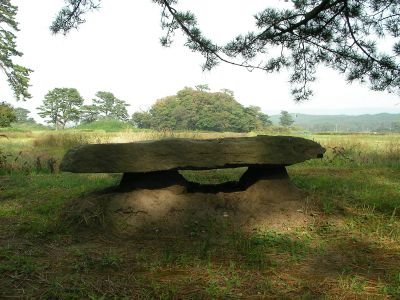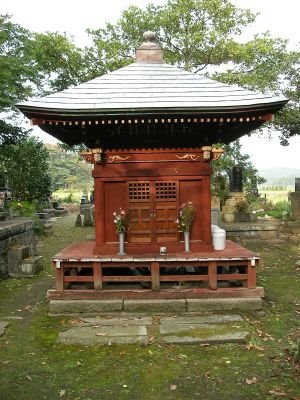Yesterday both Atsuko and I were bored, so we decided to do painting. First we had lunch in Kisakata. On the way back, as we were passing the turn off for Kanman Temple, Atsuko said "Do you want to see the temple?" I said I did, so we turned around and went back.
Here is a statue of Basho, a famous poet (artist?) who came to Kanmanji however many hundreds of years ago.

Before I show you the rest of the photos, I should tell you a little bit about the history of this area so you know what you are looking at. In the past, both Kisakata and Konoura were actually the sea. About 2500 years ago, a large eruption of Mt. Chokai blew a large hole in the side of the mountain. The rock that was blown off the mountain fell down in large island-sized boulders into the nearby ocean, creating the famous '99 islands of the north' (of which there were actually 103. They were named after the 'real' 99 islands, which are somewhere near Nagasaki I believe.) The density of these islands caused the water between them to be more like a lagoon than the open sea.
A long time ago, I heard 1200 years, the original Kanman Temple (Kanmanji) was built on the largest of the islands. The road to the front gate ran along a beach. Waves lapped at the feet of the graveyard. Since the island was made out of one giant rock, the ground was solid and dry enough for such things.
A couple of hundred years ago, a large earthquake raised this whole area up. The lagoon drained, creating the land that Konoura and Kisakata sit on today. But that left the islands stranded on dry land. You can still see them today. They still look very definitely like islands. Islands sitting amidst a sea of rice.
This stone bench at the side of the old road used to be on the shore. People could sit here and look out over the sea, and the 99 islands.

Here are a few islands. You can see that they are certainly islands and not hills.

Here is the old road up to the front gate. Now the road approaches from another angle. I am not to sure why there was an old road. I mean, who needed to use it when everyone approached the island from the other side by boat? I guess it's just traditional for a temple to have one of these.

Japanese people are so hospitable they even give clothes to their statues.

Continued below . . .










